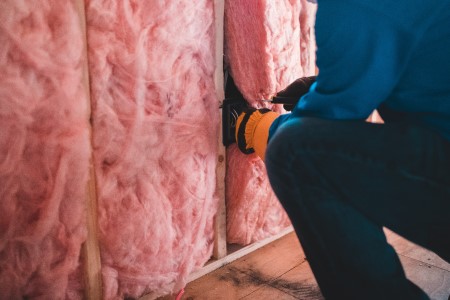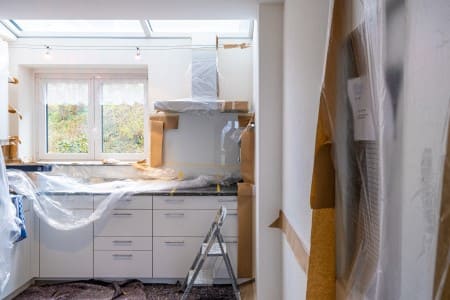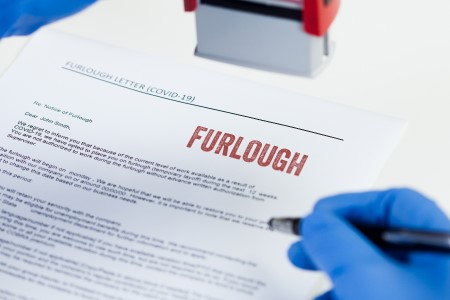
The pandemic completely upended how people live and work. Within the space of a few weeks, businesses and consumers had to adapt to new realities. While many firms simply couldn’t keep up, others found they could cope just as easily with no physical presence. Even as normality returned, many workers stuck with the work from home model as they saved on travel and other costs.
The outcome of all this is clear to see. Across the UK, high streets and office blocks lay empty. Boarded up windows are now a common sight. It has left many scratching their heads over what can be done. Fortunately, a fairly obvious solution has already come to light.
In recent years, a wave of developers and property investors have emerged to convert commercial property to residential homes. In the past, offices have been a prime target. However, shops could be the next must-have for investors. But, while there is potential in this market, investors will need to make sure they’re on the right side of the rules.
Where should property investors start?
There’s a lot that goes into answering the how to convert commercial property to residential question. But when it comes to conversions, the initial element investors should concern themselves with is planning permission rules. Some conversions, particularly the large and complex kinds, will need planning permission from the local planning authority (LPA) department of local councils.
The rules on when these permissions will be needed will vary between local authorities. Investors must check on this before any work commences. Fortunately, there is a dedicated planning portal available online which provides interactive guides and other tools for this very purpose.
But, while planning permissions may be needed, it should be noted that efforts have been made to encourage commercial-to-residential conversions. In 2013, the Government extended “permitted development rights”. These allowed the conversion of certain offices into residential spaces without needing planning permission. The rules have been tweaked over the years but in 2020/21, they were extended to keep up with Covid-19.
Commercial spaces that fell into a newly created Class E category could also be converted into residential homes without planning permission. This meant, on top of offices, investors could also look to banks, gyms, shops and more for conversions, creating more potential.
These kinds of conversions have proven popular, with applications spiking in recent months. But they haven’t been completely free of pushback. Some developers have been accused of creating unliveable flat. Moreover, a few councils appear hesitant to allow shop-to-house conversions.
While full planning permission will not be needed with permitted projects, prior approval must still be received by local councils. Where investors plan to get involved in this fairly tumultuous – yet lucrative – section of the market, they’ll want to make sure they have all their ducks in a row. All efforts should be made not to give local authorities any reason to come down hard on a project. Property investors should not just be querying of the “how” to convert commercial property to residential, but also the when, where, who; and whatever else needs to be asked.
Source: Planning Portal, Stride Insurance, Buckles Solicitors, Inside Croydon, Construction News, Landlord Zone

Make sure the property you’re investing in actually holds potential
Before any conversion plans move forward, investors will want to find a suitable commercial property in the first place. Fortunately, there are many options available to buyers. There are thousands of commercial estate agents spread across the UK. In London alone, over 900 can be found.
Commercial opportunities also regularly pop up in auction houses, such as allsop. When buying (or bidding) investors should have a thorough read through of all the paperwork involved. In some instances, this could cut out headaches down the line, as commercial properties for sale may already have granted permissions in place.
Outside of planning permission rules, investors will still need to keep on top of other applicable legislation. This may include Community Infrastructure Levies or Common Land rules. Where investors need more information, they can contact the Planning Portal or Ministry of Housing, Communities & Local Government for guidance.
Source: Zoopla, allsop, Planning Portal, Planning Portal

Get a budget sorted and think about the workers you’ll need
When a suitable property has been found, investors can get to work on their project. First and foremost, budgeting should be prioritised. Understanding what a conversion may cost can help prevent bills from spiralling. While budgets will vary across the board, Ritchie Clapson, Co-founder of property CEO, details smaller-scale projects could have a gross development value of between £500k and £2.5m.
Once the financials have been calculated, investors should then focus on the kind of workers and contractors they’ll need to get plans moving. Architects can be utilised for feasibility studies. These help determine if permissions will be needed, where pitfalls may lie and how much potential is there for a new home.
Where investors need specialist builders, they’ll be able to find what they’re looking for through bodies such as the Federation of Master Builders. Here, searches can be tailored specifically for professionals in commercial building work and conversions. Additionally, Resi, a renovation service, can provide consultations on design work, planning, timings and more.
These organisations provide a good starting point but ultimately, the more research a property investor does, the likelier they are to succeed.
Source: Property Investor Post, Design for me, Federation of Master Builders, Resi

Is it worth the hassle to convert commercial property to residential assets?
Property investors may not only ask themselves how to convert commercial property to residential assets, but why should they even bother? Firstly, targeting the residential market could prove much easier than sticking with purely commercial ventures. While there may still be demand for service-based businesses, there could be limited scope for shops and retail hubs. Online shopping has upended how people purchase their clothes, electronics, and other goods. The pandemic only hastened these changes, and shoppers are unlikely to give up the ease of the digital world.
It’s also worth remembering the property market is desperate for more homes, regardless of where they come from. Indeed, the latest data from HMRC showed UK residential transactions reached 110,970 in July, up 32.9% when compared to the same period last year. By contrast, non-residential transactions hit 10,380, up just 3.8% over the year.
It’s also possible to gauge Government’s priorities in this field. In recent years, legislation was introduced which made life a bit trickier for private, residential landlords. But, on top of easing conversion rules, the state has focused on developing brownfield land, where a lot of unloved commercial property sits.
While brownfield funding has been released for councils so far, there could still be plenty of scope for the private sector on the horizon. According to research from the countryside charity, there could be space for as many as 1.3 million homes on previously developed land. Also, the Levelling Up and Regeneration Bill may soon give local authorities the power to auction off commercial properties that have laid empty for prolonged periods. The state appears to be focusing on how to convert commercial property to residential homes, while eyeing up our high streets for the answer.
Source: Mortgage Introducer, Property Reporter, Gov.uk, CPRE, Gov.uk
Disclaimer
MFS are a bridging loan and buy-to-let mortgage provider, not financial advisors. Therefore, Investors are encouraged to seek professional advice.










